36 F. high in the Twin Cities Wednesday.
25 F. average high on December 24.
11 F. high on December 24, 2013.
-13 F. morning low on December 24, 2013.
Minnesota Weather History on December 24. Source: Twin Cities National Weather Service:
1999:
Strong winds resulted in a one hundred thirty foot radio tower to
collapse in Milaca. No wind measurements were available in the city of
Milaca. However, Princeton airport (Mille Lacs county), had a gust to 45
mph at 10:35 pm CST. St. Cloud airport (Stearns County), had a gust to
44 mph at 8:52 pm CST. Mora (Kanabec county) had a gust to 55 mph at
9:35 pm CST, and a gust to 47 mph at 10:35 pm CST.
1996:
A strong low pressure system which deposited heavy snow over much of
Minnesota on the 23rd, pulled extremely cold Canadian air southward over
Minnesota. The cold remained entrenched through the 26th. Temperatures
fell to 15 to 35 degrees below zero Christmas Day morning. The Twin
Cities and St. Cloud set new record low temperatures both days. In
addition, the high temperature on Christmas Day in the Twin Cities was
only 9 degrees below zero. Combined with the record low temperature that
morning of 22 below, the mean temperature for Christmas Day was 16
degrees below zero. This Christmas Day set a new record for being the
coldest day on record for the Twin Cities metro area, going back to the
year 1890 when modern day records began.
1922: People were golfing in the Twin Cities as temperatures reached the 50's.
Some Assembly Required
The
3 most terrifying words a parent can read Christmas morning. My day
will be spent with a power drill, Phillips-head screwdriver and wobbly
ladder, installing my new RadioShack Doppler up on the roof. Good luck
with your post-Christmas assembly challenges.
I can usually gauge
the severity of a winter by how much grit, sand and goop has accumulated
in our garage, undershirt consumption and the urge to flick on the
space heater each night. By those metrics it hasn't been that bad,
overall and nothing like last winter, to date.
December 2013 was
7.3F colder than average with 8 subzero nights as of Christmas. December
2014: 6F warmer than average and only 1 subzero night.
This is
what an El Nino winter looks like. JMA, Japan Meteorological Agency, has
made it official; I expect NOAA to confirm it soon.
2014 was
cooler than average east of the Mississippi but still on track to be the
warmest year, worldwide, ever recorded. So much for the temperature
pause.
Old Man Winter will pull his punch into early January;
single digit highs New Year's Eve the exception, not the rule looking
out 2 weeks.
A little snow is possible early Saturday, again Monday. A white New Year's Day?
White Christmas for 29% of USA.
29.2% of the Lower 48, to be exact, according to NOAA. That's lower
than average for December 25, and major population centers from Chicago
and St. Louis to Pittsburgh, New York and Washington D.C. will see a
green/brown Christmas this year.
Christmas 2013.
A year ago today about 44.4% of the USA had snow on the ground; far
more significant snow cover from the Rockies and Plains acors the
Midwest into northern New England.
Temperature Correction Next Week.
It still looks like a cold New Year's Eve and New Year's Day with highs
in the teens and lows near or just below 0F. A coating of snow is
possible late Friday into early Saturday, another light accumulation
Monday as colder air approaches. Graphic: Weatherspark.
Early January: Seasonably Cold, Not Polar.
After a numbing New Year temperatures recover into the 20s for highs
much of the first week of January, close to average. GFS guidance is
hinting at a few inches January 2-3 but I'm not convinced it's real, not
yet.
Jet Stream Winds: January 8.
A zonal, west to east wind flow aloft means some moderation as we move
into early January. I see no sign of the massive ridge reestablishing
itself out west, which would result in consistently colder weather again
east of the Rockies in a pattern similar to last winter. This winter I
expect more variability in the jet stream, alternating between Arctic
and Pacific; lower odds of a persistent polar block capable of the kind
of ridiculous cold we experienced last winter. Map: GrADS:COLA/IGES.
Snows of Christmas Past. NOAA's
Climate.gov
has an interesting article that claims an increase in Christmas snow
cover during Christmas week in recent weeks, based on data from Rutger's
Snow Lab. Here's an excerpt: "...
The map (above) shows the change
in the average number of snow-covered days between the 1990-2013 decades
and the 1966-1989 decades for the week of Christmas —in other words,
the most recent two decades of the time series minus the first two.
Places where the ground was snow-covered up to 25% more frequently in
recent decades are colored in shades of blue, and places that were
snow-covered up to 25% less frequently are colored shades of brown.
According to the Rutgers’ folks, there seems to have been a modest
increase in snow extent during the holiday week today compared to the
past for the country as a whole, although it clearly varies a lot from
place to place..."
Dreaming Of A White Christmas? Check Out This Map.
Dream on, we'll probably get socked with snow next year, but this year
it looks like more of a Memphis Christmas out there. Here's a clip from
Climate Central: "...
But
don’t mistake this map for a weather forecast. It’s simply a look at
the historical probability of snow on the ground using NOAA’s 1981-2010
climate normals. So while the data show that Duluth, Minn., has a 92
percent chance of having at least 1 inch of snow, that doesn’t mean it
will necessarily happen this year. In fact, this year an unusually low
portion of the U.S. will be snow covered. The Capital Weather Gang reports that the U.S. has its smallest snow extent in a decade for this time of year..."
Christmas Weather Facts in the Twin Cities. Media Logic Group meteorologist D.J. Kayser has some great information about Christmas weather on his
informative blog - here's an excerpt: "...
We
have seen at least a trace of snow on Christmas 83 times since 1884,
the most recent being last year when 0.2″ of snow fell. The most snow on
Christmas was back in 1945 when 9.6″ fell. Remember that this only
takes into account snow that fell on Christmas day..."
 Sun Sizzles in High-Energy X-Rays
Sun Sizzles in High-Energy X-Rays.
NASA has a story about a new look at the sun; here's an excerpt: "...
With
NuSTAR's high-energy views, it has the potential to capture
hypothesized nanoflares -- smaller versions of the sun's giant flares
that erupt with charged particles and high-energy radiation. Nanoflares,
should they exist, may explain why the sun's outer atmosphere, called
the corona, is sizzling hot, a mystery called the "coronal heating
problem." The corona is, on average, 1.8 million degrees Fahrenheit (1
million degrees Celsius), while the surface of the sun is relatively
cooler at 10,800 Fahrenheit (6,000 degrees Celsius). It is like a flame
coming out of an ice cube. Nanoflares, in combination with flares, may
be sources of the intense heat..."
Image credit above: "
X-rays
stream off the sun in this image showing observations from by NASA's
Nuclear Spectroscopic Telescope Array, or NuSTAR, overlaid on a picture
taken by NASA's Solar Dynamics Observatory (SDO)." Image Credit: NASA/JPL-Caltech/GSFC.
Polar Stratospheric Clouds. Here's an excerpt about some remarkable clouds showing up high in the skies above Scandinavia, courtesy of
spaceweather.com: "...
A possible outbreak of polar stratospheric clouds
(PMCs) is underway around the Arctic Circle. Unlike normal grey-white
clouds, which hug Earth's surface at altitudes of only 5 to 10 km, PMCs
float through the stratosphere (25 km) and they are fantastically
colorful. Ivar Marthinusen sends this picture of the phenonenon from
Skedsmokorset, Norway..."
The World Is Not Falling Apart.
Slate reminds us that, in spite of ominous headlines, things have been (much) worse in the past. Here's an excerpt: "...
As
troubling as the recent headlines have been, these lamentations need a
second look. It’s hard to believe we are in greater danger today than we
were during the two world wars, or during other perils such as the
periodic nuclear confrontations during the Cold War, the numerous
conflicts in Africa and Asia that each claimed millions of lives, or the
eight-year war between Iran and Iraq that threatened to choke the flow
of oil through the Persian Gulf and cripple the world’s economy..."
The Coolest Water Toys of 2014.
Gizmag
has their list, which they've checked twice. Sorry, I enjoy daydreaming
about water toys on the 24th day fo December. One of many character
flaws: "
We looked at 2014's coolest land toys earlier this month; now we leave the shore in our wake and head out to sea. The year in water toys kicked off in a big way at Boot Düsseldorf 2014
in January and it ran strong the year through. In fact, we'd say the
past year saw reveals and market launches of some of the coolest water
toys in recent history ... everything from transforming boats, to
seven-figure personal submarines to underwater jet packs..."
25 Things You Might Not Know About "It's a Wonderful Life".
Mental Floss has a few interesting nuggets; here's an excerpt: "...
Though
Reed sadly passed away in 1986, Owen has stood as one of the film’s
most dedicated historians, regularly introducing screenings of the
ultimate holiday classic, including during its annual run at New York City’s IFC Center
(now in its ninth year). She shared some of her mom’s memories with us
to help reveal 25 things you might not know about It’s a Wonderful
Life..."
Kudos To Google and YouTube for the Christmas Gift of Free Speech. Yes, the movie is stupid, but it's American-stupid, and we have the right to waste our money on stupidity. My respect for Google
went up a few big notches as they make "The Interview", the movie with
perhaps the most amazing marketing campaign of any movie in the history
of film, available at Google Play and
YouTube Movies. You can rent the movie for $5.99.
CHRISTMAS DAY: Cloudy, few flurries or sprinkles. Winds: S 8. High: 36
THURSDAY NIGHT: Lingering clouds, still above average. Low: 29
FRIDAY: Bright gray, cooling off a bit. High: 31
SATURDAY: Snowy coating early? Drying out. Wake-up: 24. High: 28
SUNDAY: Mostly cloudy, seasonably chilly. Wake-up: 17. High: 23
MONDAY: Cloudy, a little light snow late? Wake-up: 15. High: 29
TUESDAY: Risk of sunshine, colder. Wind chill: -5. Wake-up: 8. High: 13
NEW YEAR's EVE: Numb New Year. Peeks of sun, dry. Wake-up: 0. High: 9
Climate Stories...
Canada's Outdoor Ice Skating Rinks' Days Are Numbered Thanks to Climate Change. Here's an excerpt from
Smithsonian: "...
These
dire findings specifically relate to the the Rideau Canal, which runs
through Ottawa and each year becomes the largest ice skating rink in the
world. Researchers from McGill University found that, with each passing
decade since 1972, the canal has been skate-able for five fewer days, Conservation Magazine reports.
The average skating season during those years was 58 days, but by 2040,
it's predicted to drop to 50 days or less. By 2090, however, it will
last just 28 or 29 days if global warming continues unchecked..."
 These U.S. Cities Have Already Passed a Climate Change "Tipping Point".
These U.S. Cities Have Already Passed a Climate Change "Tipping Point". Tipping point is defined as at least 30 days a year of "nuisance flooding" or worse. Here's an excerpt from
Vice News: "...
Wilmington,
North Carolina; Annapolis, Maryland; and Washington, D.C. have already
passed their tipping points. From 2006 through 2010, for example,
Annapolis experienced an average of 34.4 nuisance days a year, compared
to an average 2.8 such days from 1956 through 1960. Of the 23 other
cities surveyed, 17 are expected to pass their tipping points by 2050...."
Let's Pause And Consider What Jesus Would Say About Climate Change. Here's the intro to an Op-Ed at
Huffington Post: "
Tis
the season when the Christian world celebrates the birth of Jesus
Christ. That child born in Bethlehem so long ago grew up to become one
of mankind's greatest moralists, teaching messages of love, sharing and
compassion. As the cloud of climate change hovering over us grows ever
more ominous, huge moral issues swirl about both the causes and the
solutions. I can't help but wonder: if Jesus were here today, what would
He say? For example, is it okay for one generation to consume resources
disproportionately to the detriment of subsequent generations?..."
The Fossil Fuel Industry Spent More Than $721 Million During 2014's Midterm Elections.
Think Progress has the story; here's an excerpt that caught my eye: "...
The 2014 midterm elections saw a wave of Republican candidates elected and re-elected to federal office, many of whom are now rearing to make the environment their first casualty
of the 114th Congress. As it turns out, the fossil fuel industry may
have had something to do with that. Taking into account direct
contributions to individuals and groups, spending on television ads and
lobbying, the energy industry spent more than $721 million during the
2014 election cycle, according to an analysis released Monday by the Center for American Progress..."
2015: The Year Businesses Recognize That Climate Change is Real. Here's an excerpt of an Op-Ed at
The Guardian: "...
But
front and center in my universe as a close – and often vocal – observer
and practitioner of corporate social responsibility and sustainability
was climate: call it the “water-energy nexus,” the “resources dilemma,”
or another variant. But in 2014, every sector of our industrial economy
felt the weight of climate change. More significantly, many more people
began to interweave the repercussions of a changing climate with issues –
like poverty, urbanization, lifestyles, economic standards and
community development – that had previously appeared as separate prongs
on any impact chart..."
2014: An Epic Year For Climate Change and Weather-Related Disasters. Here's an excerpt from The
Atlantic's CityLab: "...
The
thermostat could've seemed low in your neck of the woods—meaning
America's East Coast and Midwest and the Falkland Islands—but
temperatures were sweltering in the rest of the planet. Take a look at
these abnormally high and record-hot readings, which represent a 1.2
degrees Fahrenheit deviation above the historical average. Notes the
National Climatic Data Center: "This was the warmest January-November in
the 1880-2014 record, surpassing the previous record set in 2010 by
0.02°F...." (Graphic: NOAA NCDC).
Climate Change By The Numbers: The Cold Data That Drove a Record-Hot Year.
Salon does a good job breaking out some important numbers; here's an excerpt: "...
What
follows is a by no means comprehensive look back at some of the big
(and small) numbers driving those discussions. As we move forward to an
international climate treaty at the end of 2015 — and onward, from
there, to a world irreversibly transformed by the decisions we make in
the near future — the fact remains that it’s only going to get hotter
from here.
1.22: The deviation, in degrees Fahrenheit, of average global temperatures for the first 11 months of 2014 above the 20th century average, according to the NOAA.
142: Percentage by which atmospheric CO2 levels soared above the pre-Industrial Revolution average in 2013, the WMO announced in September, representing a record rate of growth..."
Climate Change Could Cost U.S. Coasts $1 Trillion by 2100.
The concern: enhanced damage triggered by more frequent storm surges as
tides continue to rise, threatening more coastal property. Here's an
excerpt from
Science Magazine: "
Climate
change will cost U.S. coastal areas twice what analysts had predicted,
according to a new study. Researchers had estimated that preparing
coastal cities, repairing property damages, and relocating inhabitants
for future sea level rise could have a roughly $500 billion price tag by
2100. But storm surge from tropical cyclones can cause additional local
rises in sea level rise; that figure hits about $1 trillion, researchers report this month in Climatic Change..."
"Atmospheric Rivers" To Soak California As Climate Warms. The
jury is still out on what impact a warming atmosphere will have on
California and water supplies in the western USA. Will a perpetual ridge
of hot high pressure spark pervasive drought, interrupted by flooding
sparked by increasingly frequent El Nino episodes? Here's a clip from a
story at
Live Science: "...
Under current climate scenarios, such drought-busting "atmospheric rivers"
will hit Northern California twice as often by 2100 as they do now,
said U.S. Geological Survey hydrologist Mike Dettinger. "When the
atmosphere is warmer, it holds more water vapor, so there is a huge
increase in the number of these atmospheric rivers," Dettinger said here
Wednesday (Dec. 17) at the American Geophysical Union's annual meeting..."
At Hanukkah Israel's Colors Are Blue, White...And Green. Here's a snippet of an interesting article at
jns.org: "...
Hanukkah
is known as the Jewish festival of lights, commemorating the miracle of
a Jewish rebel army’s oil burning for eight days when it should have
only burned for one. Today, the real miracle of lights is that a country
like Israel, which is roughly the size of New Jersey and is constantly
under attack both from its neighbors and from terrorists within its own
borders, has the foresight and initiative to champion the environmental
movement. From Israel’s drip irrigation systems that dramatically
decrease the amount of water needed to grow crops, to its
hydrogen-fueled cars, the country practices what it preaches, showing
the world that economic and environmental prosperity can go hand-in-hand..."
Photo credit above: "
A photovoltaic array at Israel's National Solar Energy Center in the Negev desert." Credit: David Shankbone via Wikimedia Commons.
Miami's Climate Catch-22. Building Waterfront Condos To Pay For Protection Against The Rising Seas. Here's an excerpt from an article at
The Washington Post: "...
But
Miami Beach needs this penthouse — and many more like it. The more
developers build here, the more taxes and fees the city collects to fund
a $300-million storm water project to defend the shore against the
rising sea. Approval of these luxury homes on what environmentalists
warn is global warming quicksand amounts to a high-stakes bet that Miami
Beach can, essentially, out-build climate change and protect its $27
billion worth of real estate..."

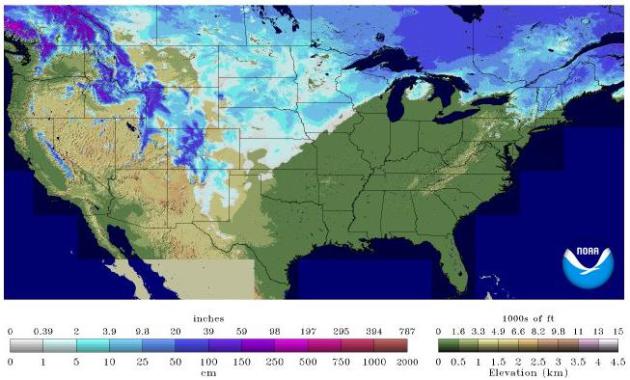



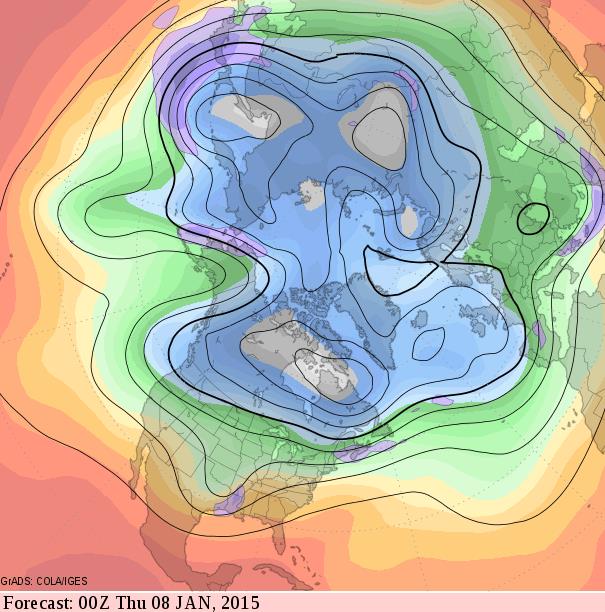

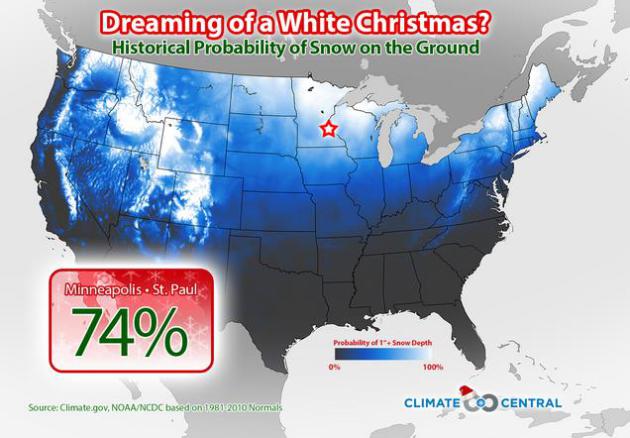



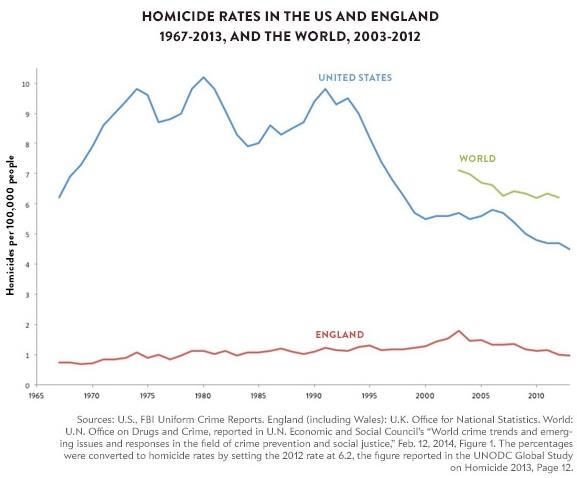





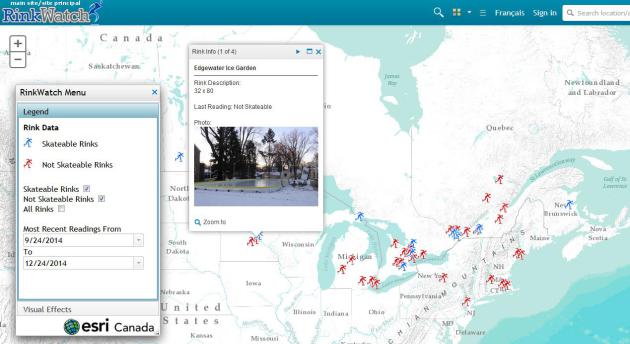

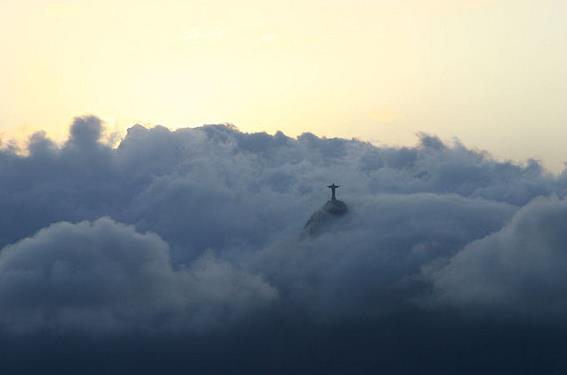
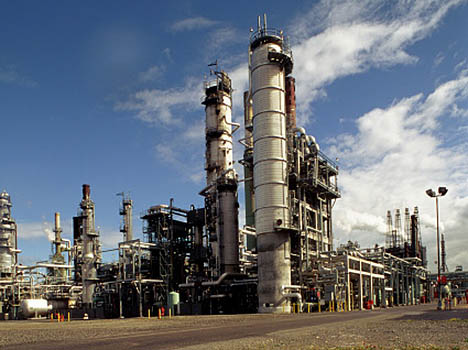

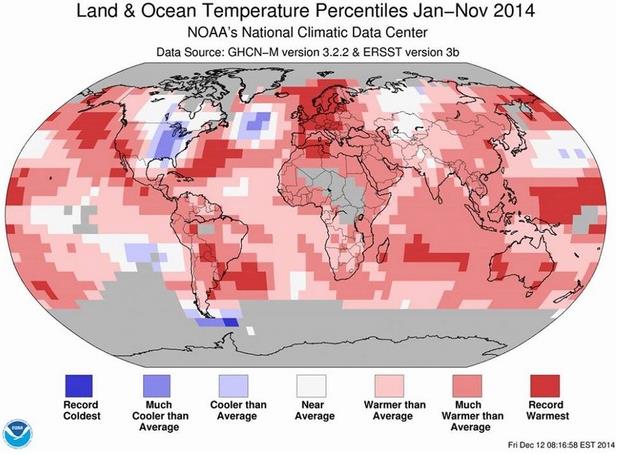


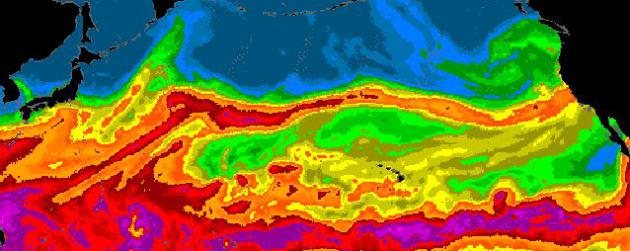
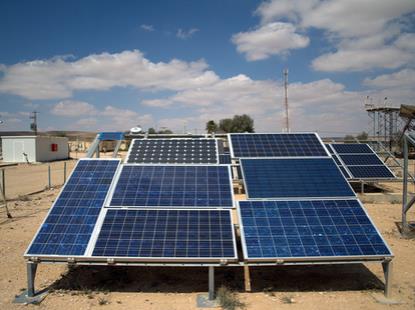

No comments:
Post a Comment